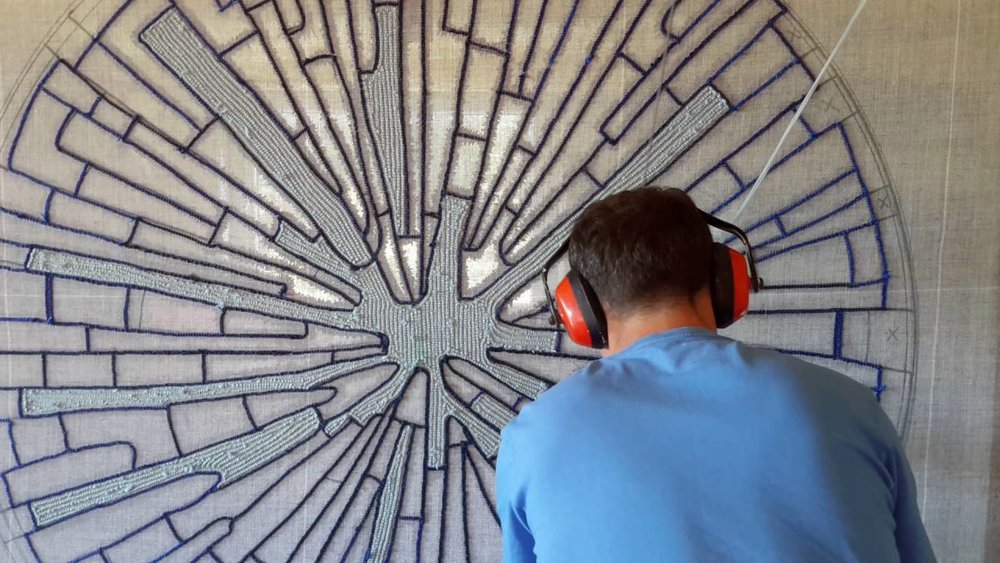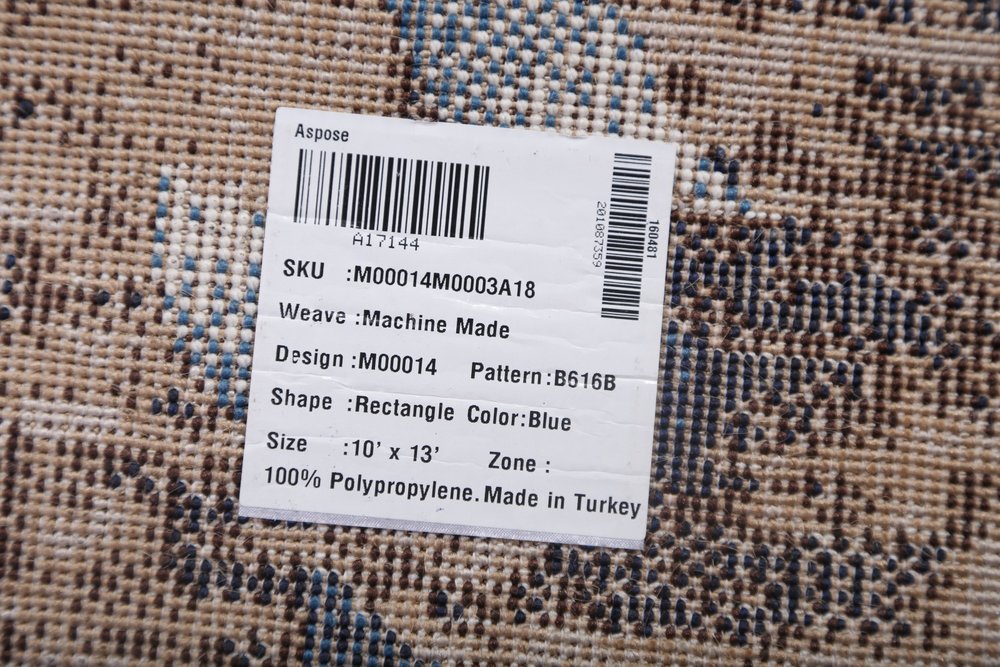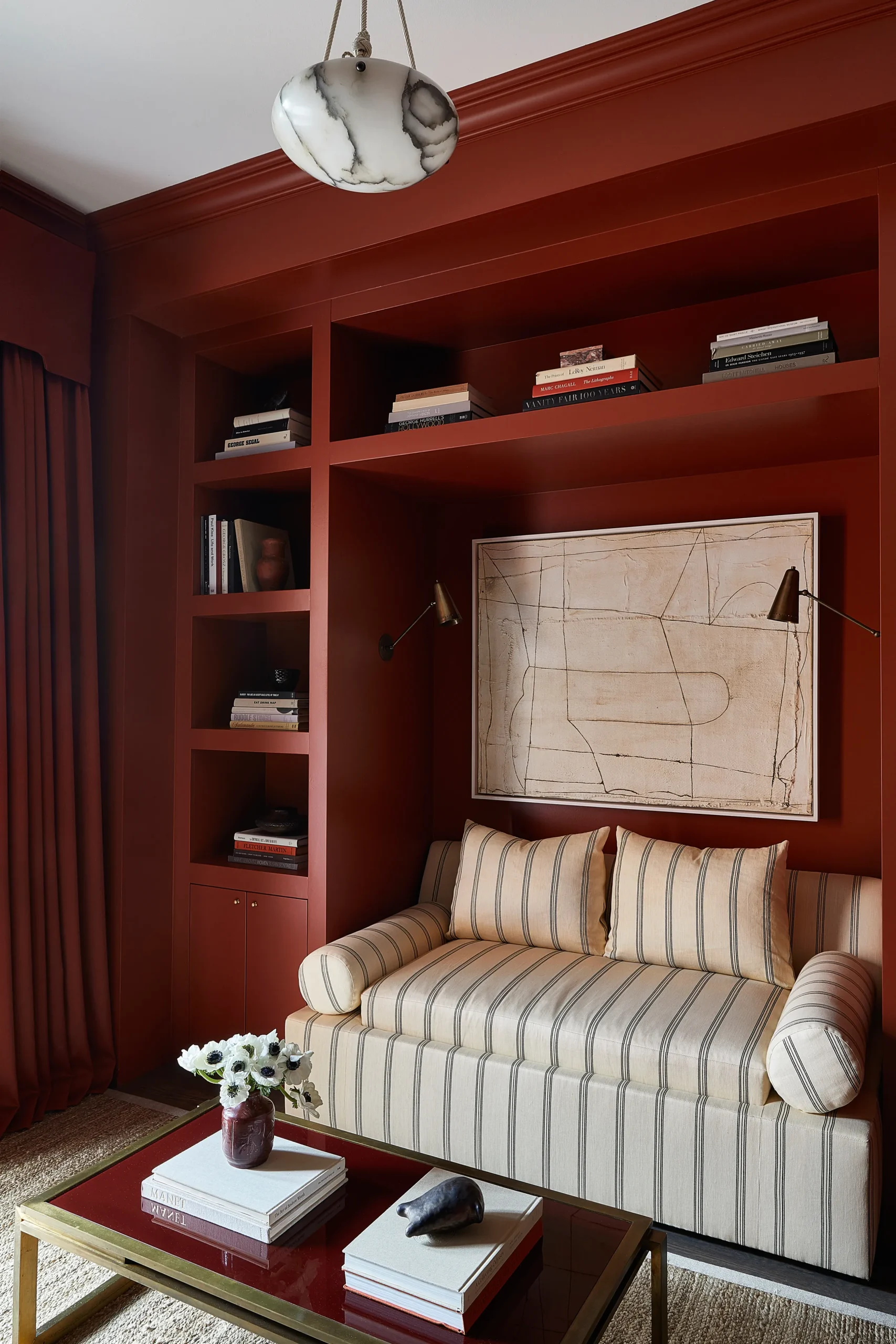
This post contains affiliate links. Thanks for supporting the blog!
In this article, I will explain how to tell if a rug is handmade, but here’s a little back story on how I got invested in Persian rugs.
Years ago, I had this vision of what I wanted my living room to look like and part of that vision was a beautiful Persian rug. Flash back to then, and I knew absolutely nothing about rugs.
I didn’t know polyester vs. wool. Handmade vs. machine made. Lastly, I definitely didn’t know what warps, wefting, knots, pile, or fringe had to do with anything.
I bought a “Persian style” rug off of Overstock and wondered why it wasn’t giving me the vibes I hoped for. A few months later, I stumbled upon authentic, handmade, Persian rugs at an antique shop and about died over their $3,000 price tag.
A year later, I splurged on a vintage, hand knotted Persian rug and fell head over heels in love. I spent countless hours watching videos and reading articles about these beautiful pieces of art. In addition, I started collecting Persian rugs and I still do so to this day! I have Persian rugs ALL over my house! They are prized possessions.

Different Types of Rugs
There are four main types of rugs, machine made, hand knotted, flat weave/hand woven, and hand tufted.
Machine Made Rugs
These are the majority of the rugs found in the United States. If you go to your local home decor story (like HomeGoods) you are going to find many machine made rugs. The only benefit to these rugs is that they are very affordable.
Machine made rugs are easily identifiable as when you flip them over, you will see that the knots are in perfect rows with no discrepancies. These rugs are made on a power loom operated by computers.
Hand Tufted Rugs
These rugs are the next step up after machine made rugs. They are technically made by hand, but not in the same fashion as a hand knotted rug (we will get to those later).
Hand tufted rugs are made using a hand held drill gun that inserts the pile into a cloth foundation which creates a loop. These rugs remind me of the latch hook creations I used to craft when I was in elementary school! Don’t let that reference fool you, hand tufted rugs still take a lot of time, effort and talent to bring to life.

Process of hand tufting a rug.
Flat Weave/Hand Woven Rugs
Flat weave/hand woven rugs are handmade, but have no pile. They are very high quality and commonly from Turkey, India, and Mexico. You are going to pay a decent price tag for a hand woven rug.
Soumak, Dhurrie, kilim and braided are all types of flat weave rugs. Below is an example of a hand woven kilim rug. All of that said, hand weaving is still different than hand knotting.
Hand Knotted Rugs
Lastly, the hand knotted rug. Hand knotted rugs are specially made by hand on a loom. The term “Persian rug” actually has to do with the type of knot the maker uses to attach the wool to the wool or cotton foundation (the foundation is the strings on the loom shown below). A cotton foundation is going to make the rug less expensive than one with a wool foundation. A hand knotted rug with a wool foundations can be of great value.
An 8’X10′ hand knotted rug can take anywhere from 7-15 months to make, depending on quality. These rugs are commonly made from wool, cotton, silk, and other natural materials. They range in price depending on the quality and skill invested in the work.
Silk is definitely a more expensive material than wool and if it is used in a rug, that will be reflected in the price. Silk gives a hand knotted rug a nice silky, shimmer to the eye and to the hand.

How to Tell if a Rug is Handmade
There are two easy ways to identify whether a rug is handmade or not.
- Check the back of the rug
- Look at the fringe of the rug
The back of the rug can be a dead giveaway. A machine made rug will have perfectly even and uniform knots, while a handmade rug will have slightly uneven and differentiated knots. The more intricate the design and the smaller the knots, the more the rug is likely to be worth.
On the other hand, with a hand tufted rug, you won’t even see the “knots.” You will find a piece of canvas like fabric placed over an acrylic application which is used to hold the tufts in place.

Back of a hand tufted rug

Handmade rug where you can see all of the knots and details of the work.
Next, look at the fringe of the rug. Machine made rugs may not have any fringe at all. If they do have fringe, it will be sewn or glued onto the foundation of the rug. The fringe on a handmade rug will be part of the rugs foundation. The fringe is present where the maker cuts the rug off the loom.

Machine made rug with sewn on fringe.

Machine sewn on fringe.

Handmade rug where the fringe is part of the rugs foundation.
If you are insanely lucky, you might even find a sticker tag on the back of the rug denoting its materials and origin.

Rug tag indicating country of origin and weave.
Three of the rugs I have found at Goodwill stores have had stickers on the back with all the rugs information. Two of the three were handmade! Talk about a score!
I recently received this book from Amazon as a gift, and it’s been so helpful in identify rug origins and understanding the symbols, motifs, and patterns. I highly recommend it if you plan to invest in Persian rugs! It will also describe how to tell if a rug is handmade!

Where I Buy My Persian Rugs Today
Today, I order all of my Persian rugs online from RugSource. Their rugs are crazy affordable and extremely high quality. I’ve been super impressed by every rug I’ve ordered from them. They have a huge variety of patterns, colors, and sizes!





Super awesome tips, Miranda! I needed to know these things. Thanks for the post!! xo
Yay! So glad it was helpful. XO
I’m on the hunt for a rug! Thanks for the tips, super exciting.
Absolutely! Good luck. Send me pictures if you find something! I love a good thrifted rug 🙂
I bought a beautiful rug at a a Estate sale.Its hand made.on the back of rug is is the strings of yarn tied off..I can find nothing about this rug. Please advise me any information on this rug. Thanks a bunch
Hey Rosie! So sorry I didn’t get to your comment right away. Send me an email with pictures of your rug to miranda@thoughtfullythrifted.com
Hi,,I’ve just bought a rug from an Iranian lady. She said it was handmade. I’d like to know more about it, and if it was worth what I paid for it (£90). It has a label on the back in Arabic script which I think may be Farsi.
The rug is 3m x 2m and is blue and grey with a pattern of vases. It has damage in the centre in the form of a hole about 10cm x 3cm. This doesn’t bother me too much as I’ve put the rug under my bed. I can send photos if you have an email address. Thanks in advance!
Hi Sam! I would love to see pictures of your rug. You can send them to miranda@thoughtfullythrifted.com
I’ve read up on rugs so many times but this breakdown is much more helpful than other resources I’ve found! Do you have any tips for identifying rug patterns?
So glad! Sorry for the late respond (seriously 5 months) so sorry! I ordered a book offline to help identify patterns 🙂 https://amzn.to/2AwW1UW
I’d like to send you pics of a rug I believe is hand made, but I’m not sure
Oh congrats on your engagement
Thank you! Feel free to email over photos
May I send you some pics of rugs? I am totally perplexed in what is handmade versus machine. I can see the back looks different but someone said you had to see the actual knot in the tuft side at the base.
Hi there, feel free to send to miranda@thoughtfullythrifted.com
Thanks for the information, enjoyed reading it. Loved the back story.
Hello; I have recently come across several what I think to be very high end, large rugs in a friends mansion. He wants me to help sell them. If I were to send some pictures, could you tell me about them and possible value. They look magnificent to me.
Hi Scott,
I would recommend taking them to a local appraiser in your area!
Cheers,
Miranda
Thanks, that is helpful. Wished I could take you with me tomorrow as I am going to see a rug (Craigslist) and the guy says it is a Soumak from 1910. I know a little bit about rugs but not too much.
Once you look at a few rug types it gets so much easier to see what you are looking at!